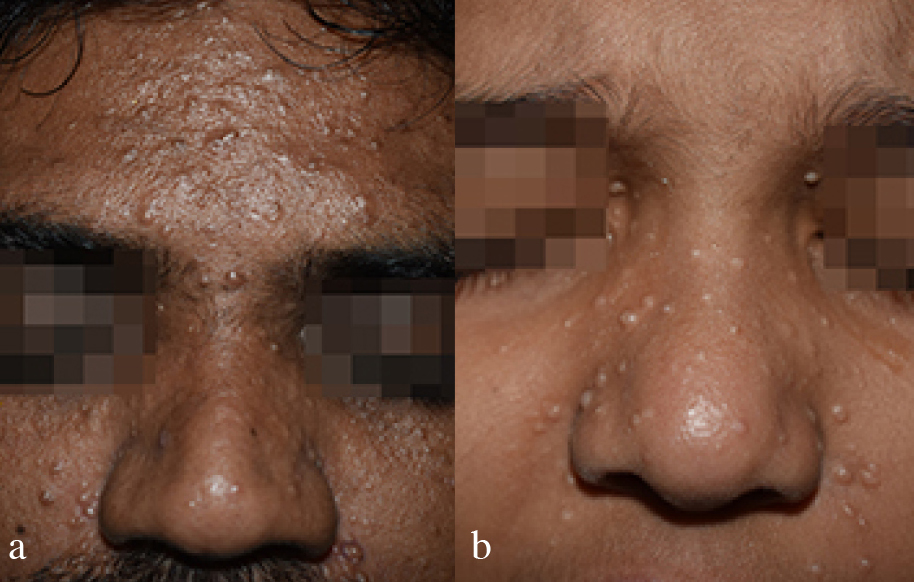Dermatofibrosarcoma protuberans in a 5-year-old child.

Downloads
DOI:
https://doi.org/10.26326/2281-9649.31.3.2276How to Cite
Abstract
Dermatofibrosarcoma protuberans (DFSP) is a rare, slow-growing but progressive soft tissue fibroblastic sarcoma with a high tendency to relapse, but with very low metastatic potential. In children it is even rarer than in adults with an estimated incidence of 1 per million per year (5). How-ever, there are also congenital cases (3). In the child there is no different distribution between the two sexes and it is localized in the limbs in two thirds of cases, in the trunk in a third (4).
The histological examination is decisive for the diagnosis, which is based on the presence of a proliferation of fibroblastic appearance with a storiform arrangement, poor peripheral delimitation, invasion of the subcutaneous tissue, positivity of proliferating cells with CD-34, low mitotic index. The histological examination also serves to differentiate DFSP from fibrosaroma, which has a worse prognosis due to its ability to metastasize.
Once the histological examination has confirmed the clinical suspicion of DFSP, the therapeutic problem arises. After evaluating the extent of the neoplasm with MRI or CT scan, it is still necessary to remove the tumor, if a biopsy has been done, or to reoperate on the scar if the tumor has been already removed, with a margin of 2 cm (1). Relapses are less frequent in the child. However, they occur between 9 (2) and 15% (4) after complete remission, attested by imaging and histologically free margins. For this reason, even after a complete remission, it is necessary to monitor the child for years.
In advanced, unresectable or metastasizing cases, therapy with imatinib has been tried (2). The latter is a monoclonal antibody directed against the platelet-derived growth factor (PDGF), which is characteristically dysregulated in DFSP, due to a chromosomal translocation t(17;22), whereby the PDGF-beta gene on chromosome 22 fuses with the alpha collagen gene of type 1 (COL1A1) on chromosome 17. The translocation is also used in diagnosis because it is almost constantly present in DFSP (4).
The prognosis of DFSP is good especially in children with 100% survival at 5 years (4).
The current case has been described for its rarity and to reiterate the need for timely radical excision with sufficiently large margins and prolonged follow-up in affected children.
